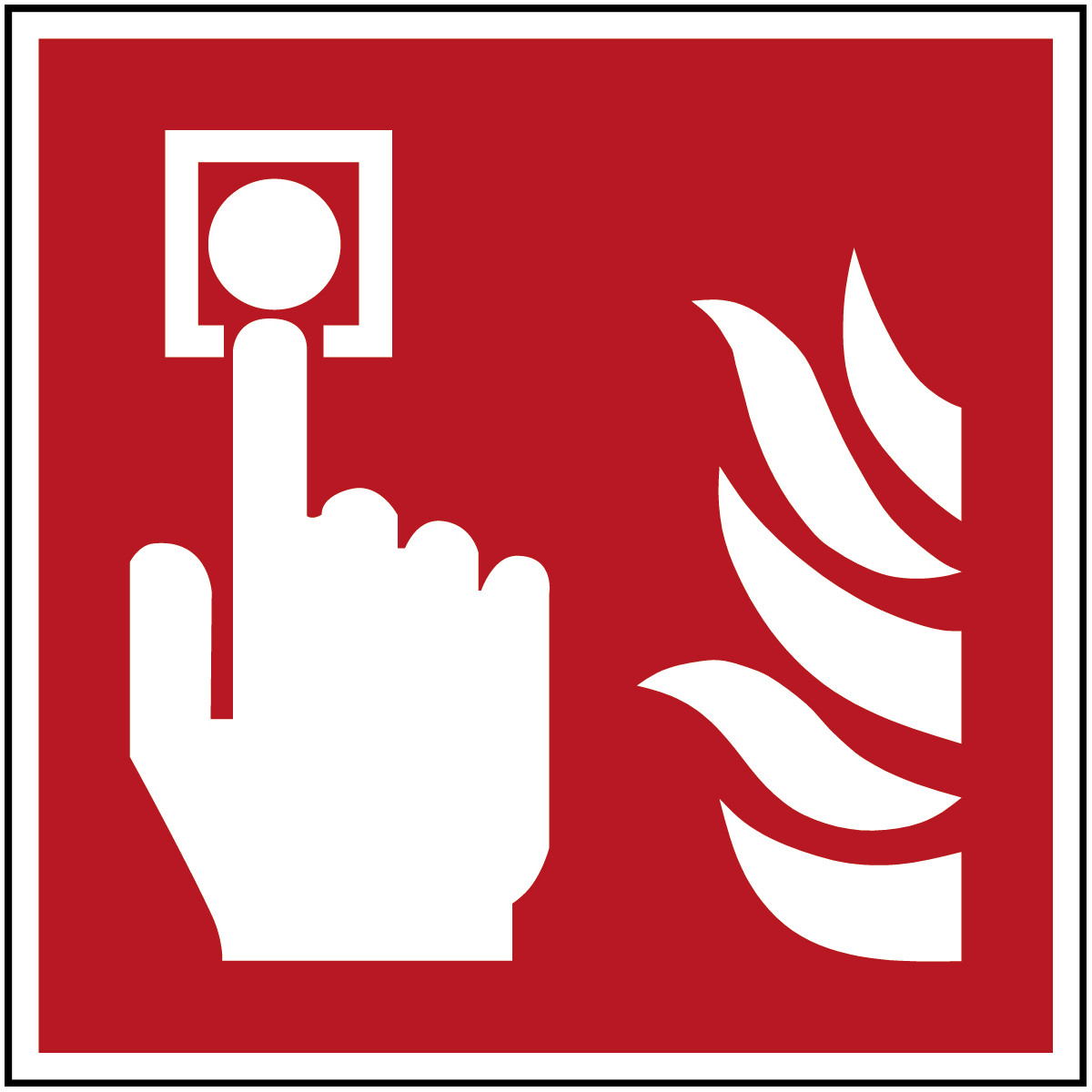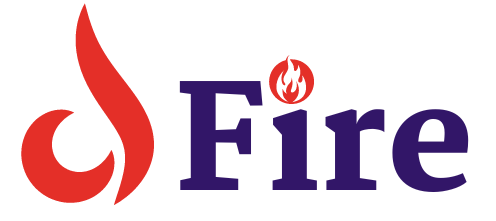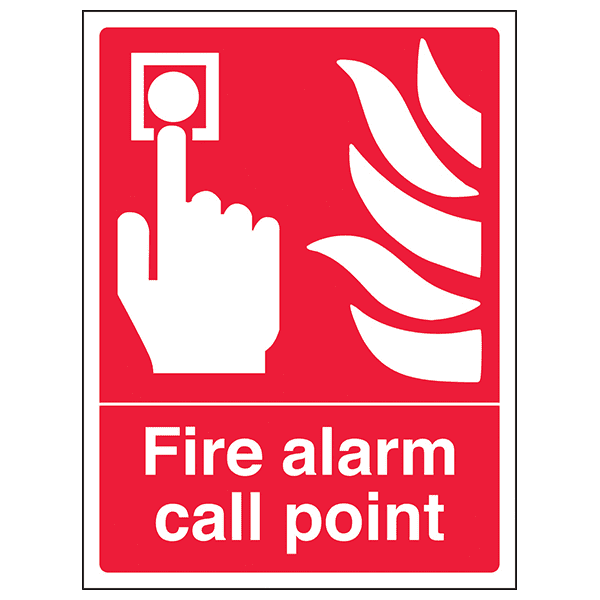A fire alarm call point is a manual device used to trigger a building’s fire alarm system. It allows occupants to alert others of a fire emergency quickly.
Fire alarm call points, also known as manual call points or break glass units, are crucial for fire safety. Located strategically throughout buildings, these devices enable individuals to manually activate the fire alarm system in the event of a fire.

By pressing or breaking the glass, an immediate alert is sent, prompting an evacuation and alerting emergency services. This swift action can save lives and minimize damage, making fire alarm call points an essential component of any comprehensive fire safety plan. Regular maintenance and clear signage ensure their effectiveness and accessibility during emergencies.
Introduction To Fire Alarm Call Points
Fire alarm call points are crucial for building safety. These devices help people alert others about a fire. They are easy to use and essential for timely evacuations.
Importance In Safety
Fire alarm call points play a vital role in emergency situations. They allow anyone to quickly signal a fire, speeding up the response time.
Timely alerts can save lives and reduce damage. Buildings with these devices are safer for occupants.
| Benefit | Explanation |
|---|---|
| Quick Response | Enables immediate alert to everyone in the building. |
| Life-Saving | Speeds up evacuation, protecting lives. |
| Damage Reduction | Helps minimize fire-related damage through rapid action. |
Basic Functionality
Fire alarm call points are simple to operate. Typically, you break the glass or press a button.
- Breaking the glass triggers the alarm.
- Pressing a button sends a signal to the alarm system.
Once activated, the alarm system alerts everyone in the building. This prompt action helps ensure safety and order during an emergency.

Credit: www.freepik.com
Types Of Fire Alarm Call Points
Fire alarm call points are essential for safety. There are two main types: manual and automatic. Each type has unique features. Understanding these types helps ensure better fire safety.
Manual Call Points
Manual call points, also known as break glass units, require a person to activate them. They are usually found in buildings. To use them, simply break the glass or press a button.
- Simple to use
- Located in accessible areas
- Require human interaction
Manual call points are common in schools, offices, and public buildings. They provide a quick way to alert others during a fire.
Automatic Call Points
Automatic call points activate without human intervention. They detect smoke or heat and are part of an automated fire alarm system.
- Work without human action
- Detect smoke or heat
- Part of automated systems
Automatic call points are ideal for large buildings. They ensure quick response times. This makes them vital for high-risk areas.
The table below shows the main differences between manual and automatic call points:
| Feature | Manual Call Points | Automatic Call Points |
|---|---|---|
| Activation | Manual | Automatic |
| Detection | Human | Smoke/Heat |
| Usage | Break glass or press button | Detects and triggers alarm |
Both types of call points are crucial. They help maintain safety and ensure quick response in fire emergencies.
Installation Guidelines
Installing a Fire Alarm Call Point ensures quick alerts during emergencies. Proper installation saves lives and property. Follow the guidelines below for effective installation.
Placement Recommendations
Correct placement of call points is crucial. Here are some key points:
- Install at exits and stairways.
- Place at a height of 1.4 meters.
- Ensure visibility without obstructions.
Compliance With Regulations
Compliance with regulations ensures safety and legality. Follow these standards:
| Regulation | Description |
|---|---|
| BS 5839-1 | Standards for fire alarm systems in buildings. |
| EN 54-11 | Requirements for manual call points. |

Credit: www.brady.eu
Usage Best Practices
Proper usage of fire alarm call points ensures safety in emergencies. Misuse can lead to confusion and unnecessary disruptions. Follow these best practices to use fire alarm call points effectively and responsibly.
When To Activate
Activate the fire alarm call point during a real fire emergency. This includes visible flames, smoke, or a strong burning smell. Using the alarm correctly helps evacuate people quickly and safely.
Do not activate the fire alarm for non-emergencies. If you see a minor issue, inform the building management instead.
How To Avoid False Alarms
False alarms cause panic and waste emergency resources. Follow these tips to avoid them:
- Educate everyone about the correct use of fire alarm call points.
- Keep the call points easily accessible but protected from accidental activation.
- Regularly inspect and maintain the fire alarm system.
Teach children the importance of not playing with fire alarm call points. This prevents unnecessary alarms and keeps everyone safe.
| Best Practice | Description |
|---|---|
| Educate Users | Inform everyone about when and how to use call points. |
| Protect Call Points | Ensure call points are visible but protected from damage. |
| Regular Maintenance | Inspect and service the alarm system regularly. |
Maintenance And Inspection
Maintaining and inspecting fire alarm call points is crucial for safety. Regular checks ensure they work during emergencies. Proper care can prevent failures and false alarms. Below are key practices for maintaining fire alarm call points.
Regular Testing
Regular testing keeps your fire alarm call points reliable. Test each unit monthly. Use a test key to activate the alarm. Listen for the sound and watch for lights. Record the test results in a log.
- Test each call point monthly.
- Use a test key for activation.
- Check the sound and light signals.
- Log the results.
Common Issues To Watch For
Watch for common issues that may affect your fire alarm call points. Some problems are easy to spot.
| Issue | Description |
|---|---|
| False Alarms | These can disrupt operations and cause panic. Check for faults. |
| Damage | Physical damage can render a call point useless. Inspect for cracks. |
| Battery Failure | Batteries can die. Replace them during inspections. |
| Sensor Malfunction | Sensors may fail. Regular testing can identify issues. |
Keeping fire alarm call points in good shape is vital. Regular testing and watching for common issues ensure safety.
Integrating With Other Safety Systems
Modern fire alarm call points are not standalone devices. They work in harmony with other safety systems, ensuring comprehensive protection and optimizing response times in emergencies. Let’s explore how fire alarm call points integrate with other crucial safety systems.
Smoke Detectors
Smoke detectors are essential in any fire safety system. They detect smoke and trigger alarms. Integrating smoke detectors with fire alarm call points enhances safety. When a smoke detector senses smoke, the call point activates the alarm. This ensures that everyone in the building is alerted quickly.
With this integration, the fire department gets notified immediately. This speeds up response times. The combination of smoke detectors and call points provides a robust fire safety solution.
Emergency Lighting
Emergency lighting is crucial during a fire. It helps people find exits quickly. Integrating emergency lighting with fire alarm call points enhances evacuation procedures. When the call point is activated, emergency lights turn on automatically.
This integration ensures that escape routes are well-lit. It also helps to reduce panic. People can see clearly and evacuate safely. The synchronized operation of call points and emergency lighting is vital for building safety.
| System | Function | Integration Benefit |
|---|---|---|
| Smoke Detectors | Detects smoke | Speeds up alarm activation |
| Emergency Lighting | Illuminates escape routes | Enhances evacuation |
- Smoke Detectors: Trigger alarms when smoke is detected.
- Emergency Lighting: Lights up exits during an emergency.
Training And Education
Training and education are crucial for the effective use of fire alarm call points. Proper training ensures quick and correct responses during emergencies. This section discusses staff training programs and public awareness campaigns.
Staff Training Programs
Staff training programs are vital for workplace safety. Well-trained staff can handle emergencies effectively. They know the correct procedure for using fire alarm call points.
- Regular training sessions ensure staff are always prepared.
- Practical drills help staff practice real-life scenarios.
- Instructional videos provide visual guidance on using fire alarms.
Training programs should cover:
- Identifying fire hazards
- Locating fire alarm call points
- Activating the alarm
- Evacuation procedures
Public Awareness Campaigns
Public awareness campaigns educate the community about fire safety. These campaigns can save lives by informing the public about fire alarm call points.
Effective campaigns include:
- Posters and flyers in public places
- Social media posts with fire safety tips
- Community workshops for hands-on learning
- School programs to teach children about fire safety
Information shared in public campaigns:
- What fire alarm call points are
- How to locate them
- Steps to activate the alarm
- Importance of quick action
Both staff training programs and public awareness campaigns are essential. They ensure everyone knows how to respond to a fire emergency.

Future Trends In Fire Safety
The future of fire safety is bright. New technologies and improved protocols are emerging. These advancements aim to save lives and protect property. One key area is the fire alarm call point. Let’s explore the future trends in this critical component.
Technological Advancements
Fire alarm call points are evolving. Smart sensors are being integrated. These sensors detect smoke and heat more accurately. Wireless technology allows for easier installation. No need for extensive wiring anymore.
AI is making fire detection smarter. Artificial Intelligence (AI) can predict fire hazards. It can also reduce false alarms. This makes the system more reliable. Cloud-based systems offer remote monitoring. You can get alerts on your phone.
| Advancement | Benefit |
|---|---|
| Smart Sensors | Accurate detection |
| Wireless Technology | Easy installation |
| AI Integration | Predictive analysis |
| Cloud-Based Systems | Remote monitoring |
Enhanced Safety Protocols
New safety protocols are being developed. They aim to make fire alarms more effective. Regular maintenance checks are now mandatory. This ensures the system is always ready.
Training programs for staff and residents are being updated. Everyone needs to know how to react in case of a fire. Evacuation plans are also being improved. Clear instructions and pathways are crucial.
- Regular maintenance checks
- Updated training programs
- Improved evacuation plans
These trends are shaping the future of fire safety. With these advancements, fire alarm call points are more reliable and effective. Stay updated to ensure maximum safety.
Frequently Asked Questions
What Is A Fire Alarm Call Point?
A fire alarm call point is a manual device that allows individuals to trigger a fire alarm. It typically consists of a broken glass or a push button.
How Does A Fire Alarm Call Point Work?
When activated, the call point sends a signal to the fire alarm control panel. This action initiates the fire alarm system, alerting occupants.
Where Should Fire Alarm Call Points Be Installed?
Install fire alarm call points near exits, stairwells, and along evacuation routes. They should be easily accessible and visible.
Why Are Fire Alarm Call Points Important?
Fire alarm call points provide a manual way to alert everyone in case of a fire. They are crucial for safety.
Conclusion
Choosing the right fire alarm call point is crucial for safety. It ensures quick response during emergencies. Always opt for reliable and tested devices. Regular maintenance is key. Protect your premises and ensure peace of mind with an effective fire alarm system.
Stay safe and secure with the best fire alarm call points.

I’m Abdus Sobur, a highly skilled and professional Fire Safety Officer with a passion for safeguarding lives and property. Over the course of my career, I’ve conducted numerous successful fire safety audits, earning a reputation for excellence in ensuring public safety.
In addition to my role as a Fire Safety Officer, I’m also dedicated to raising awareness about the importance of fire safety. Through my blog, I share insights into the functions of different fire safety equipment, aiming to empower individuals with the knowledge they need to protect themselves and their communities.
I’m driven by a deep commitment to promoting fire safety awareness and preventing fire-related incidents.

